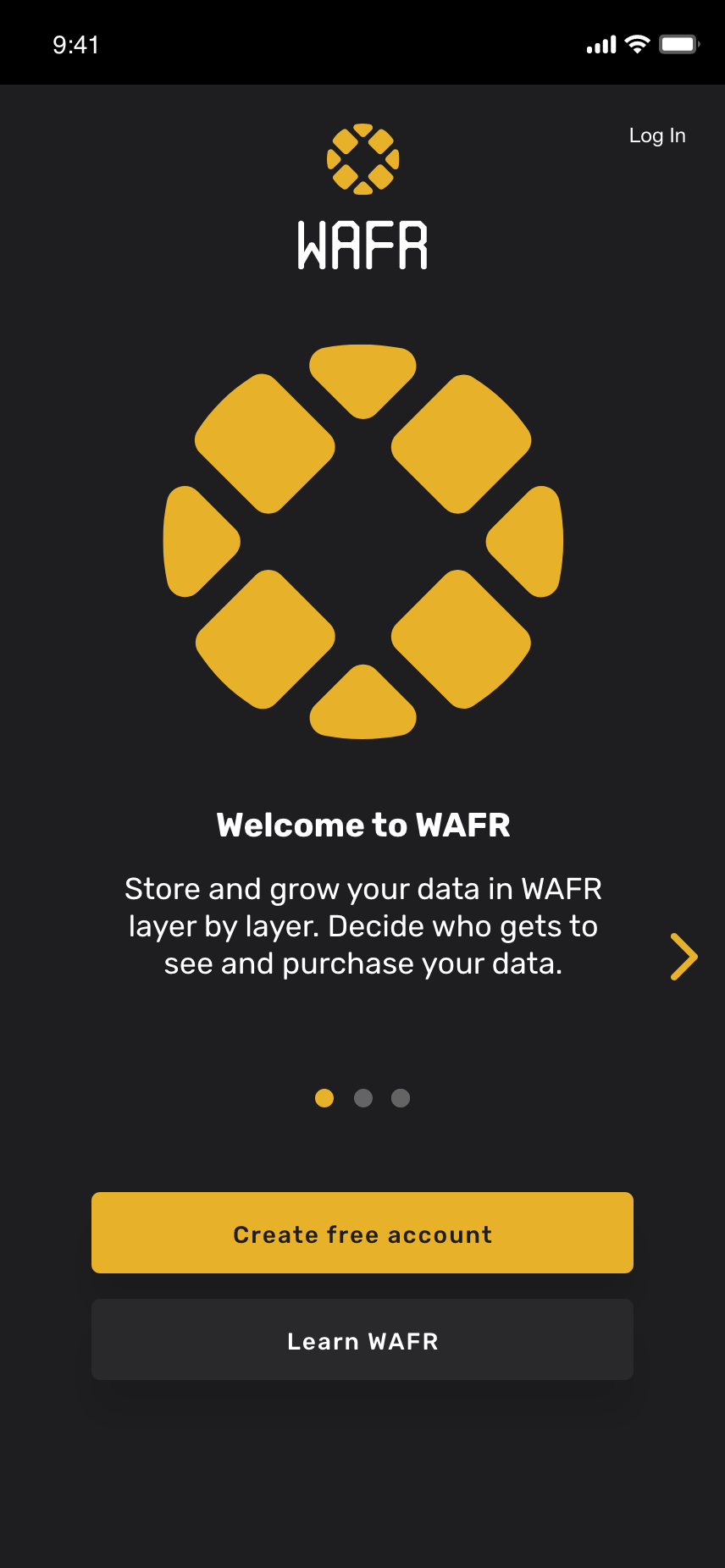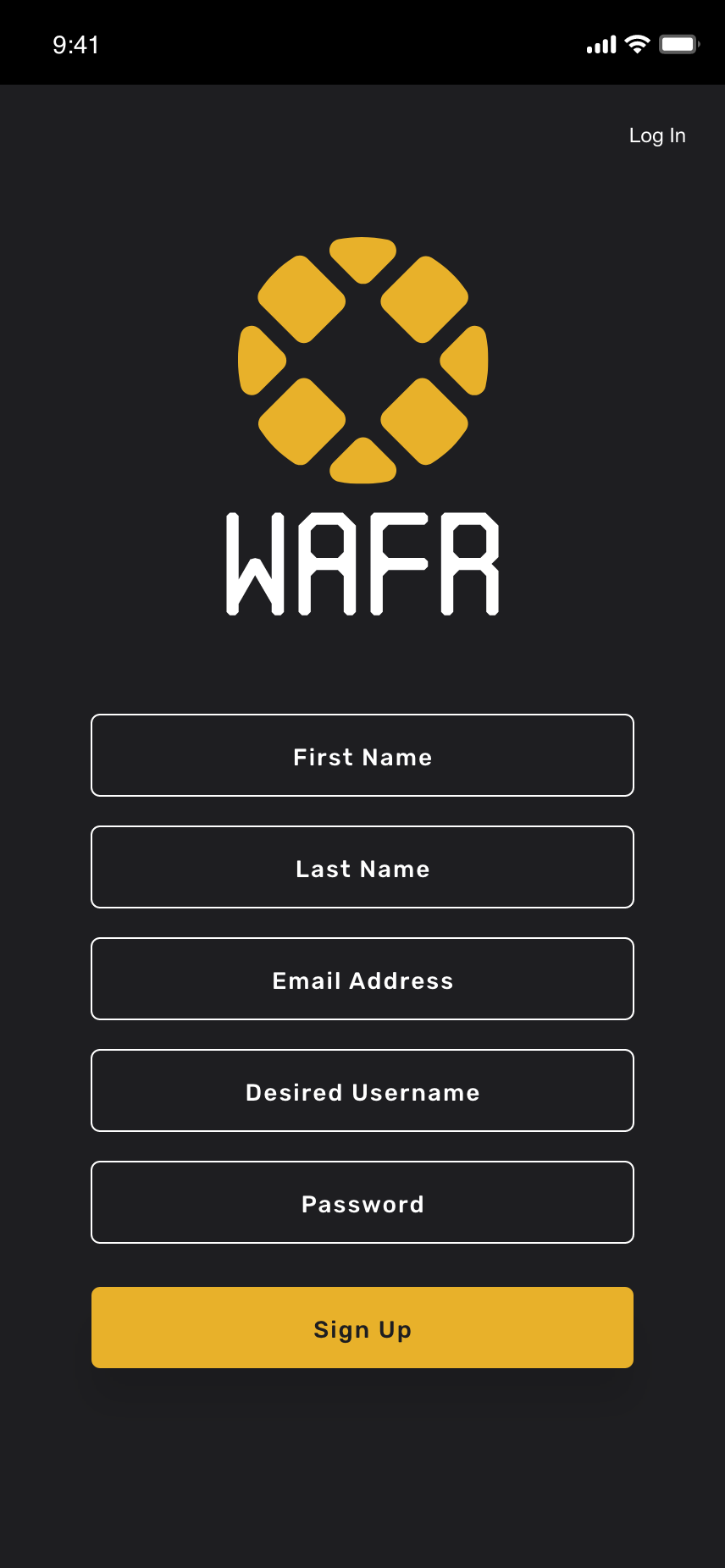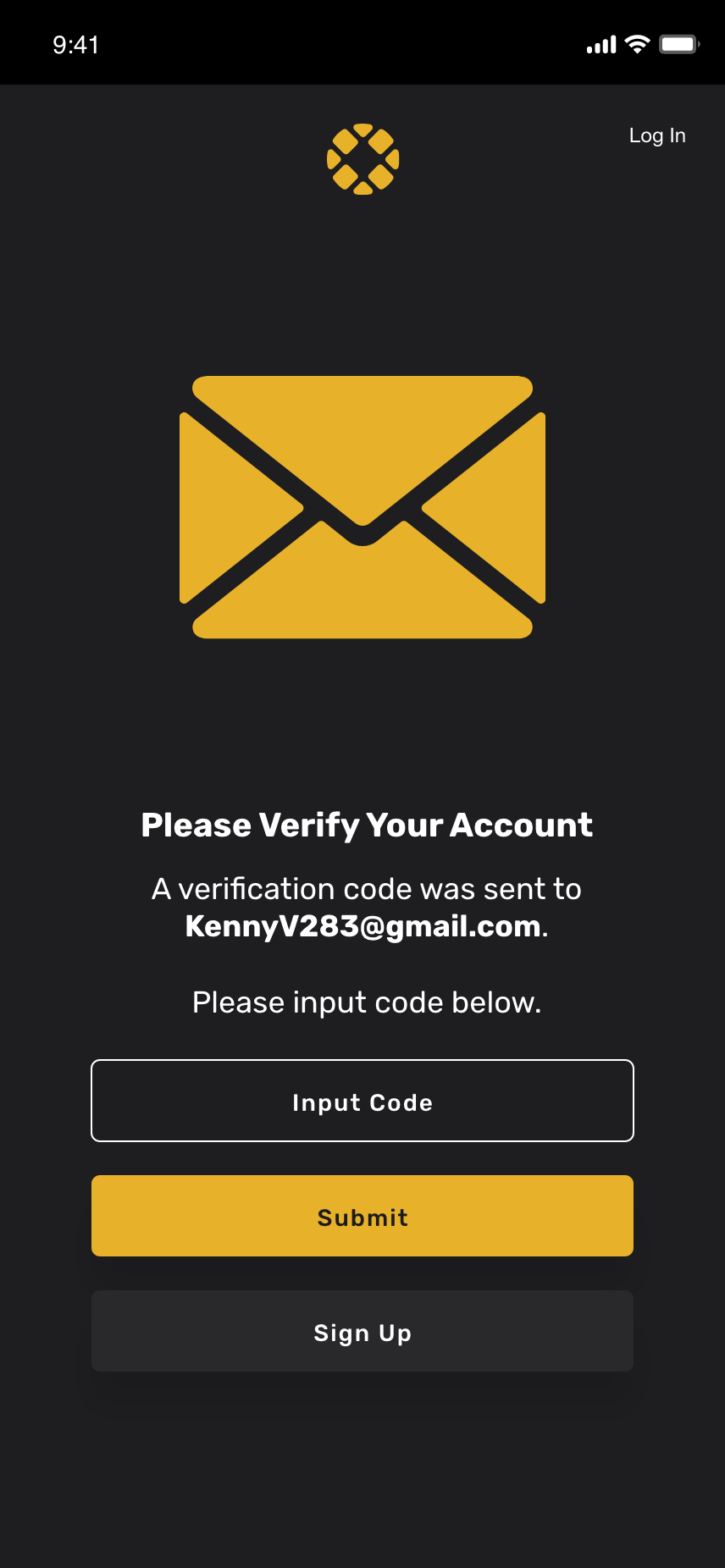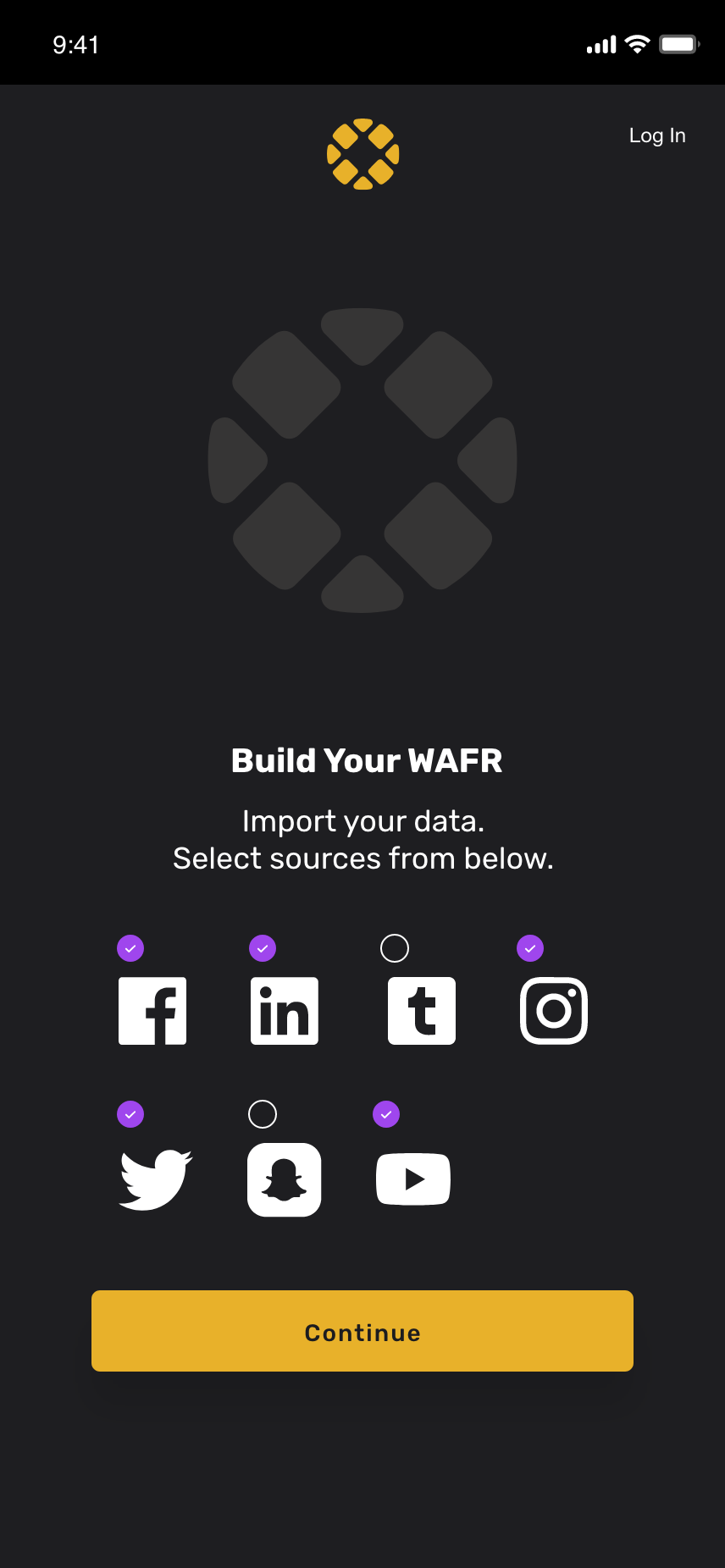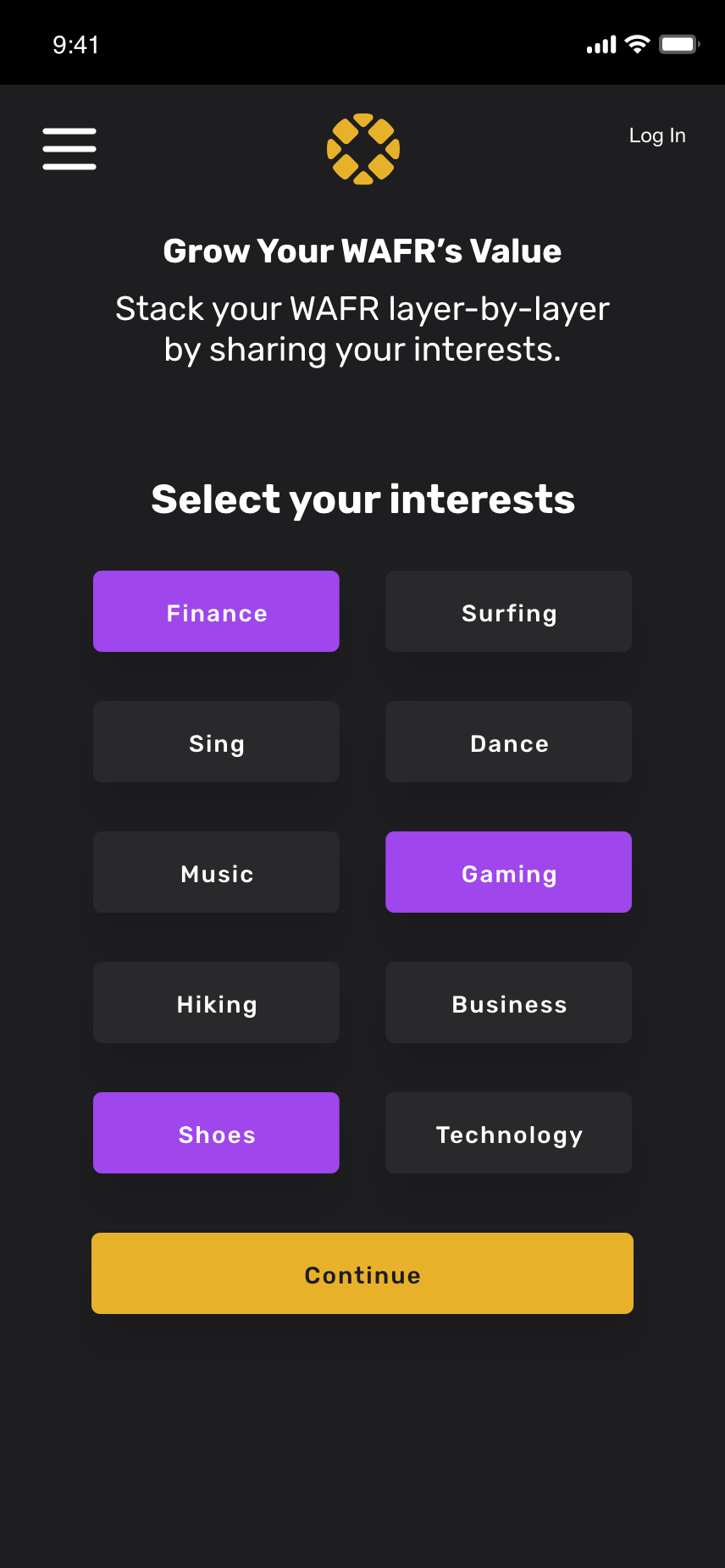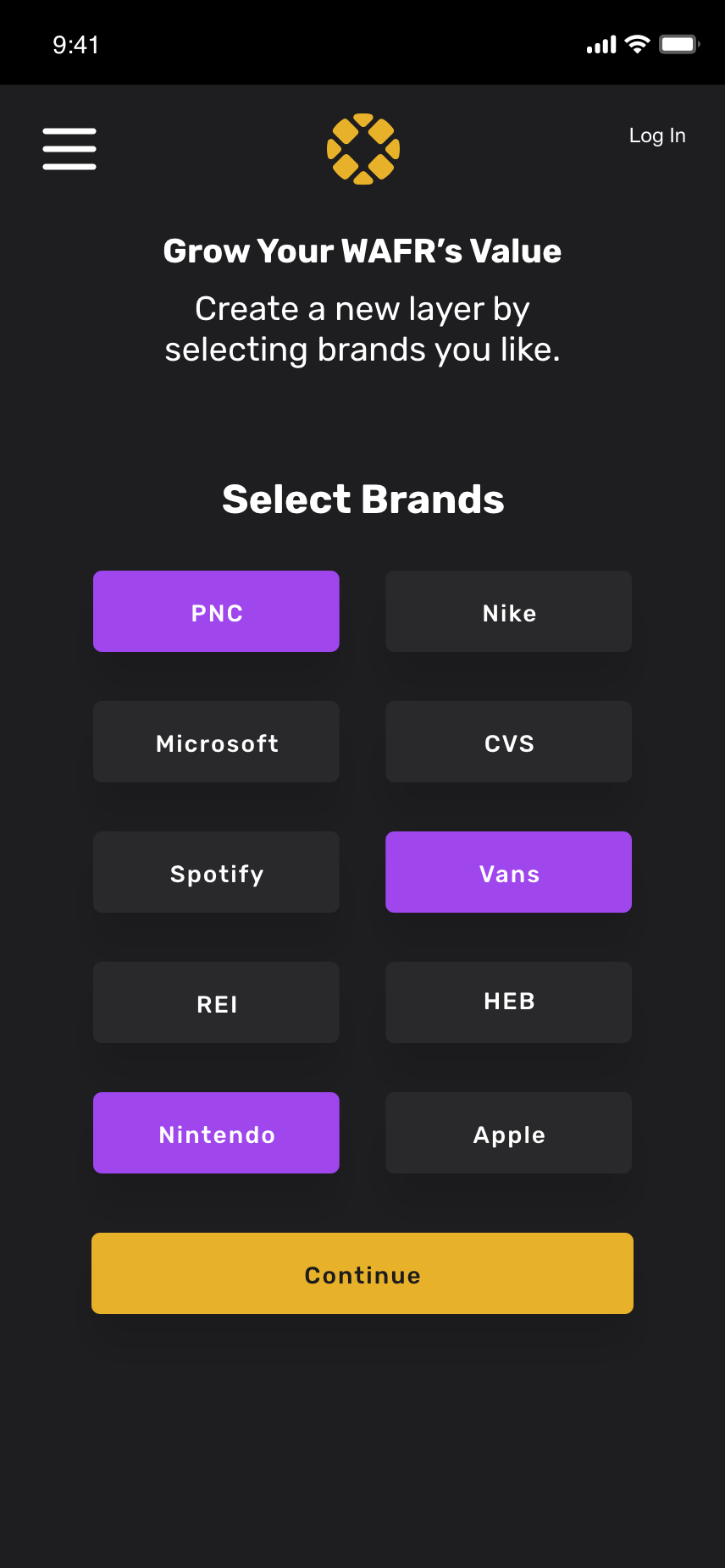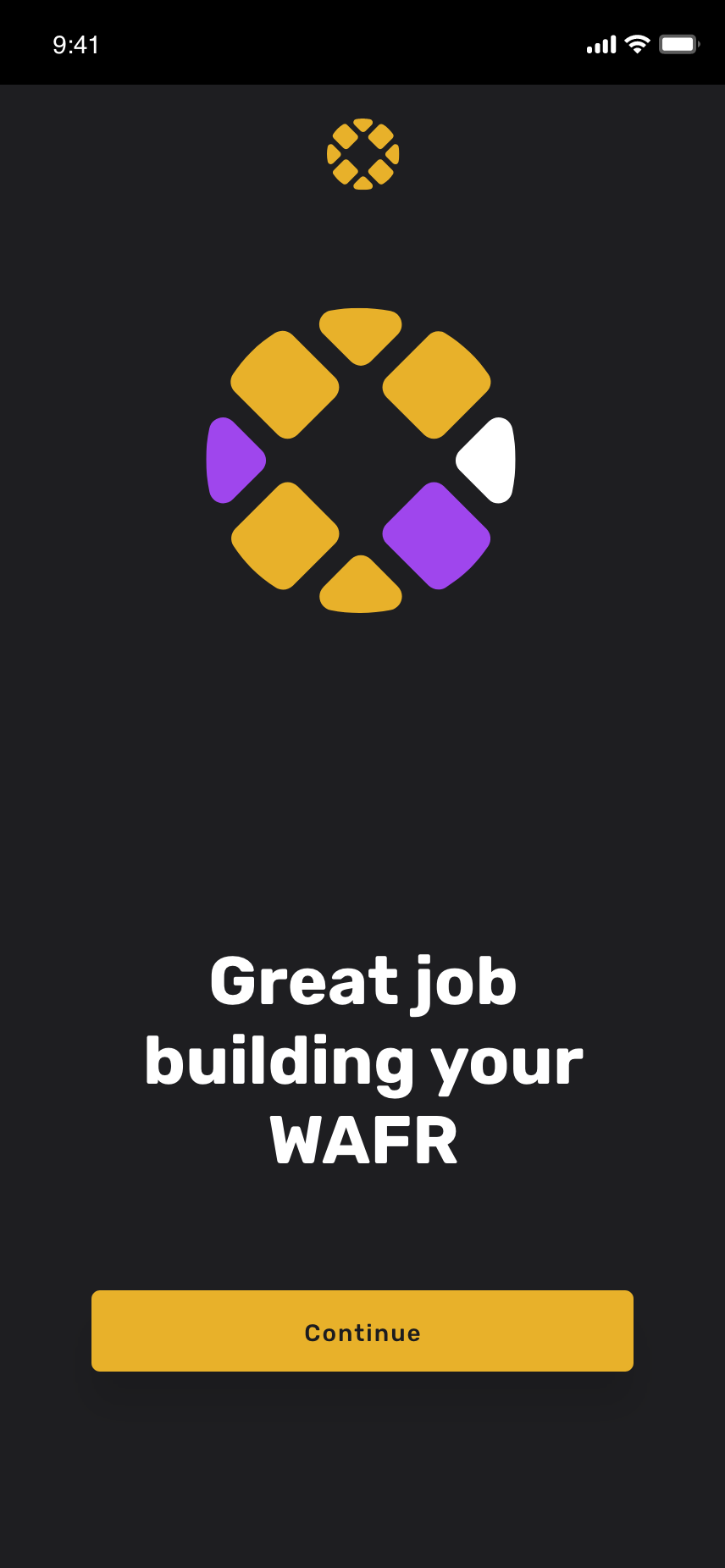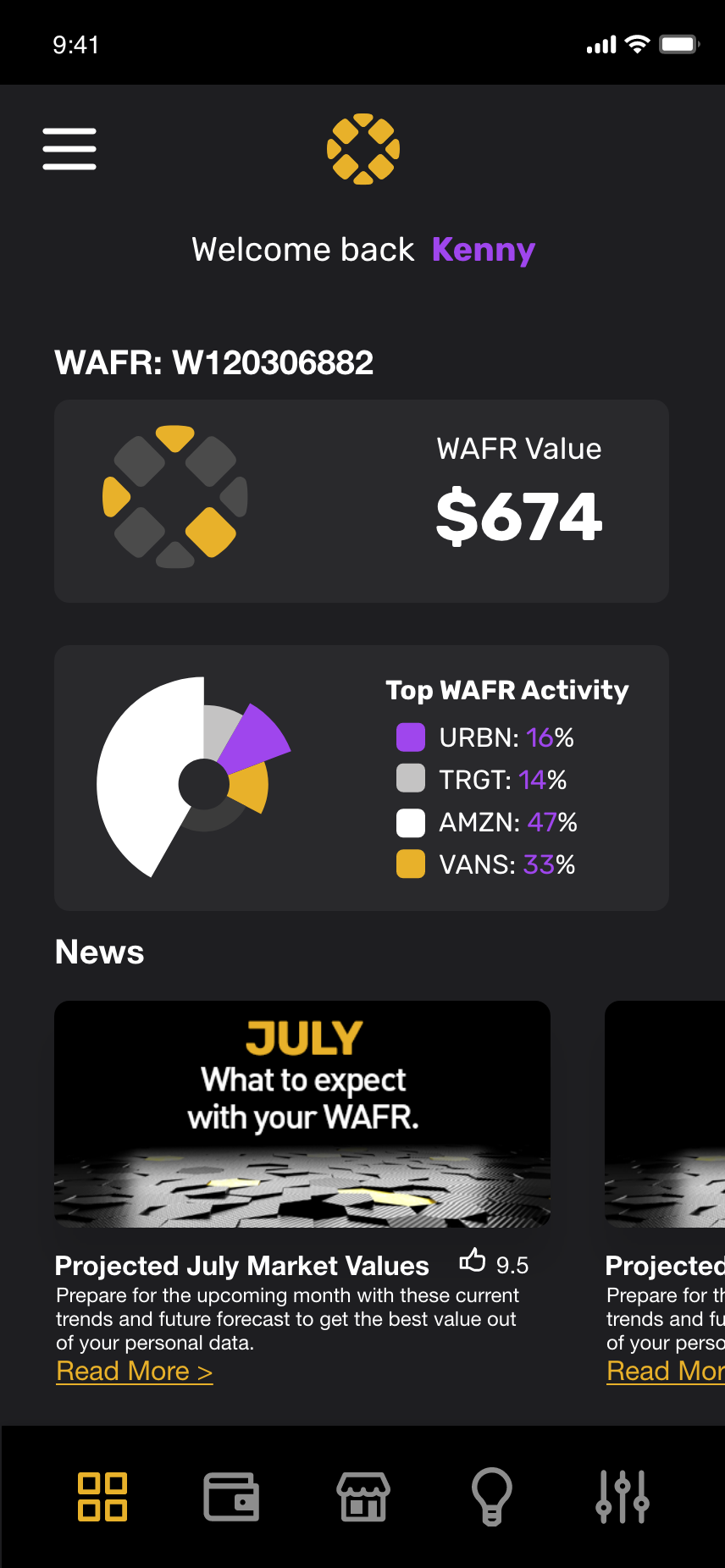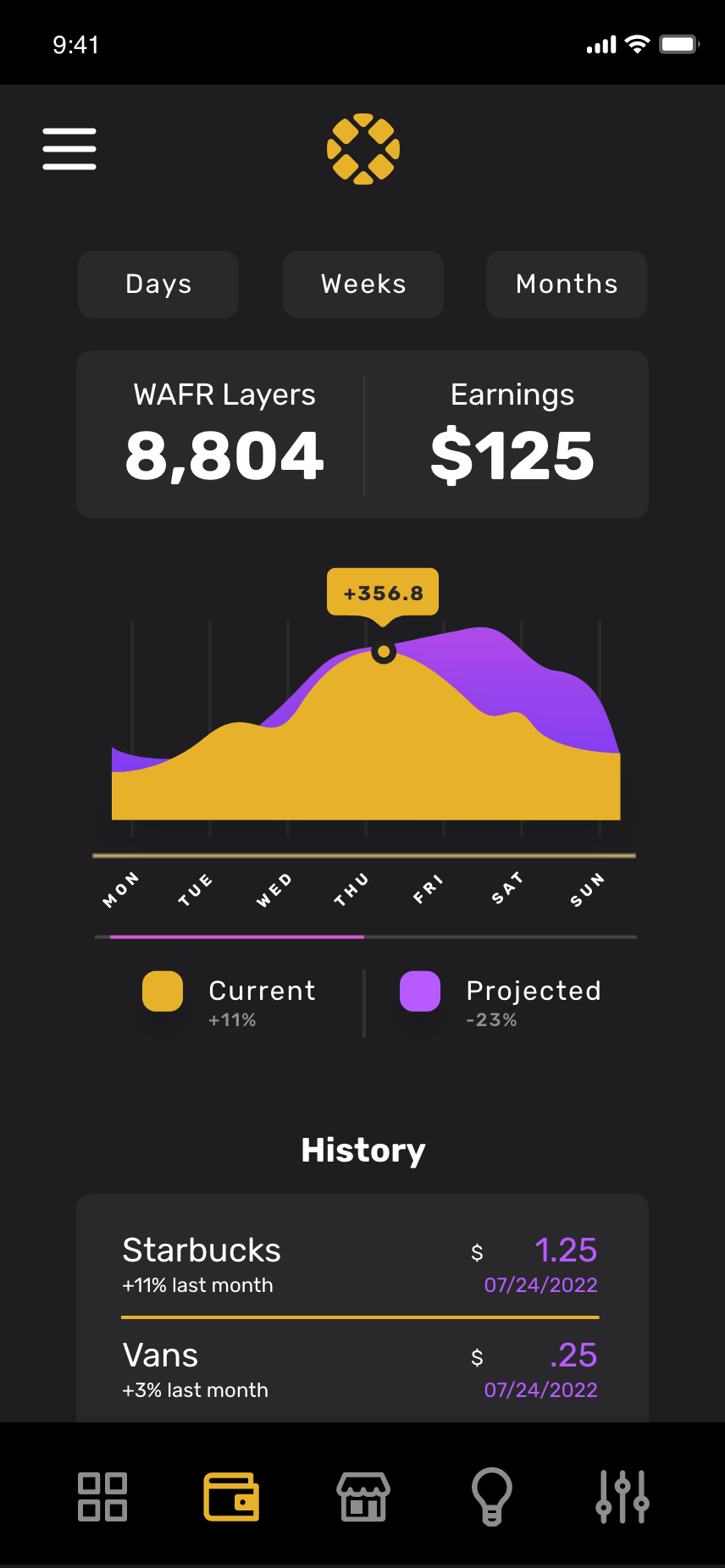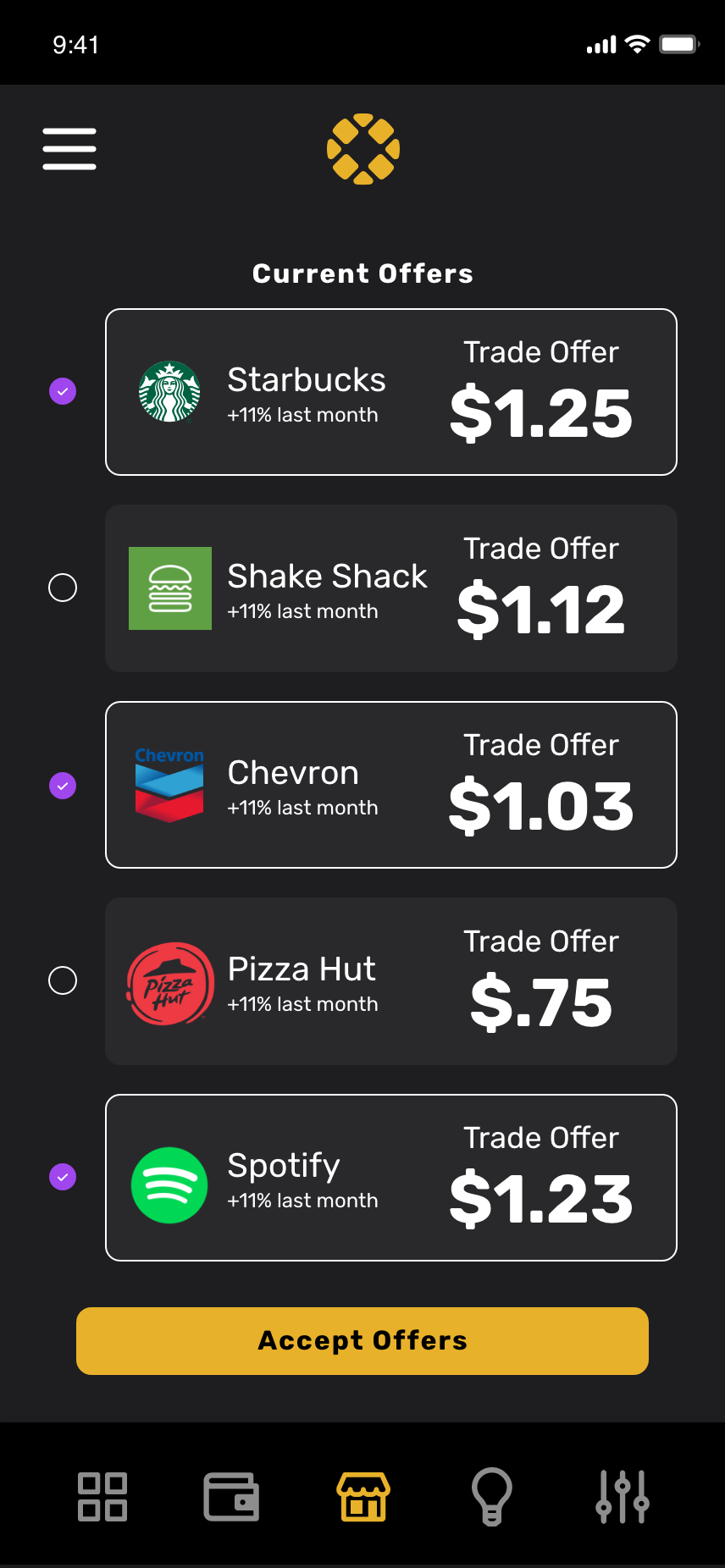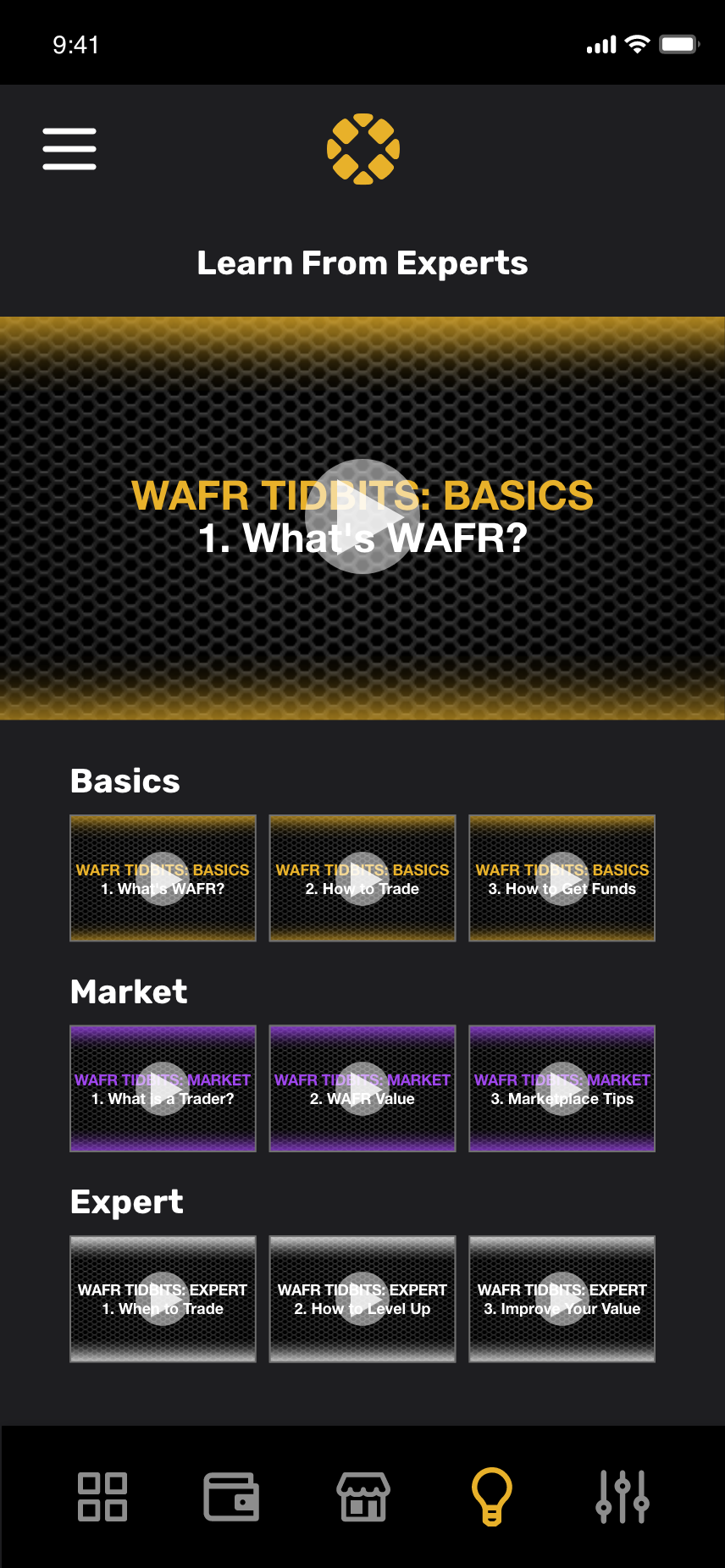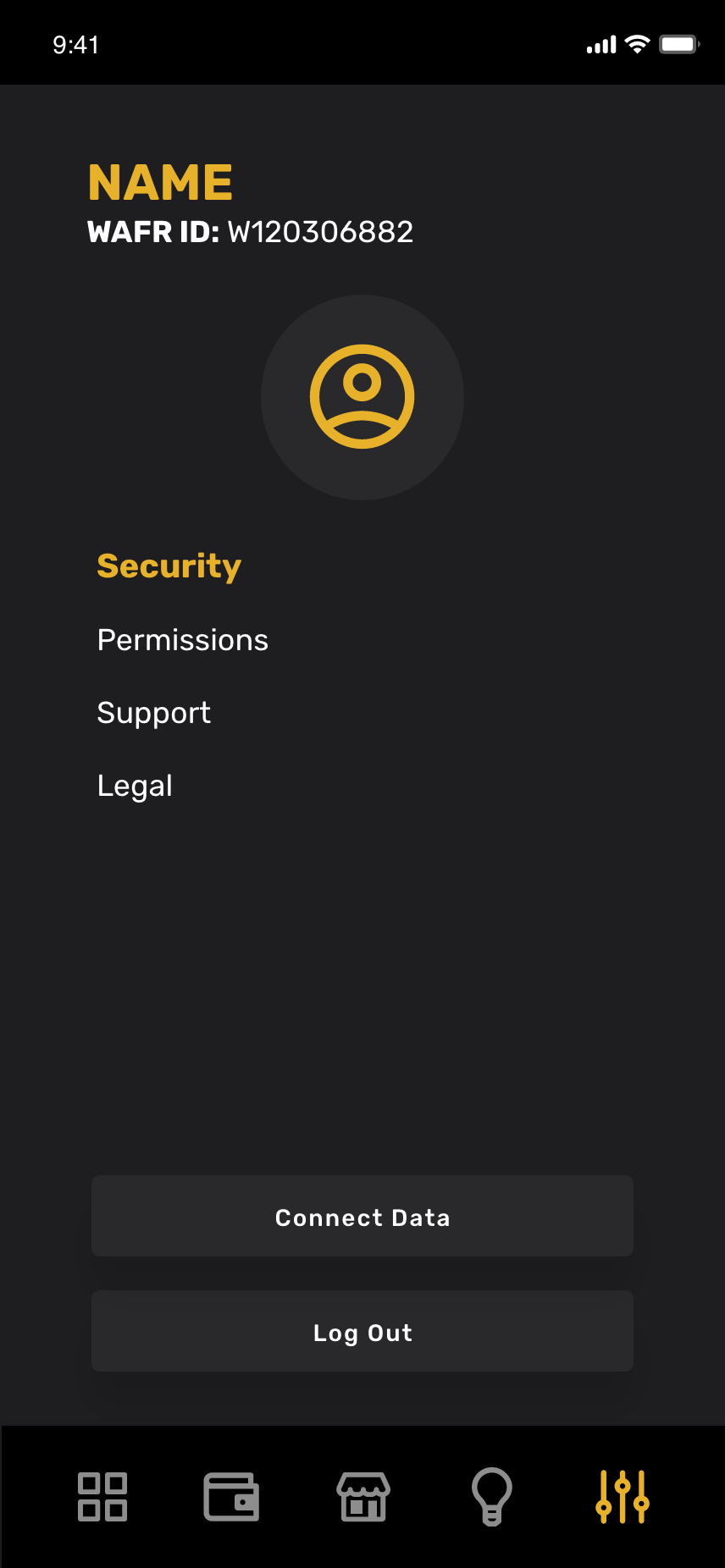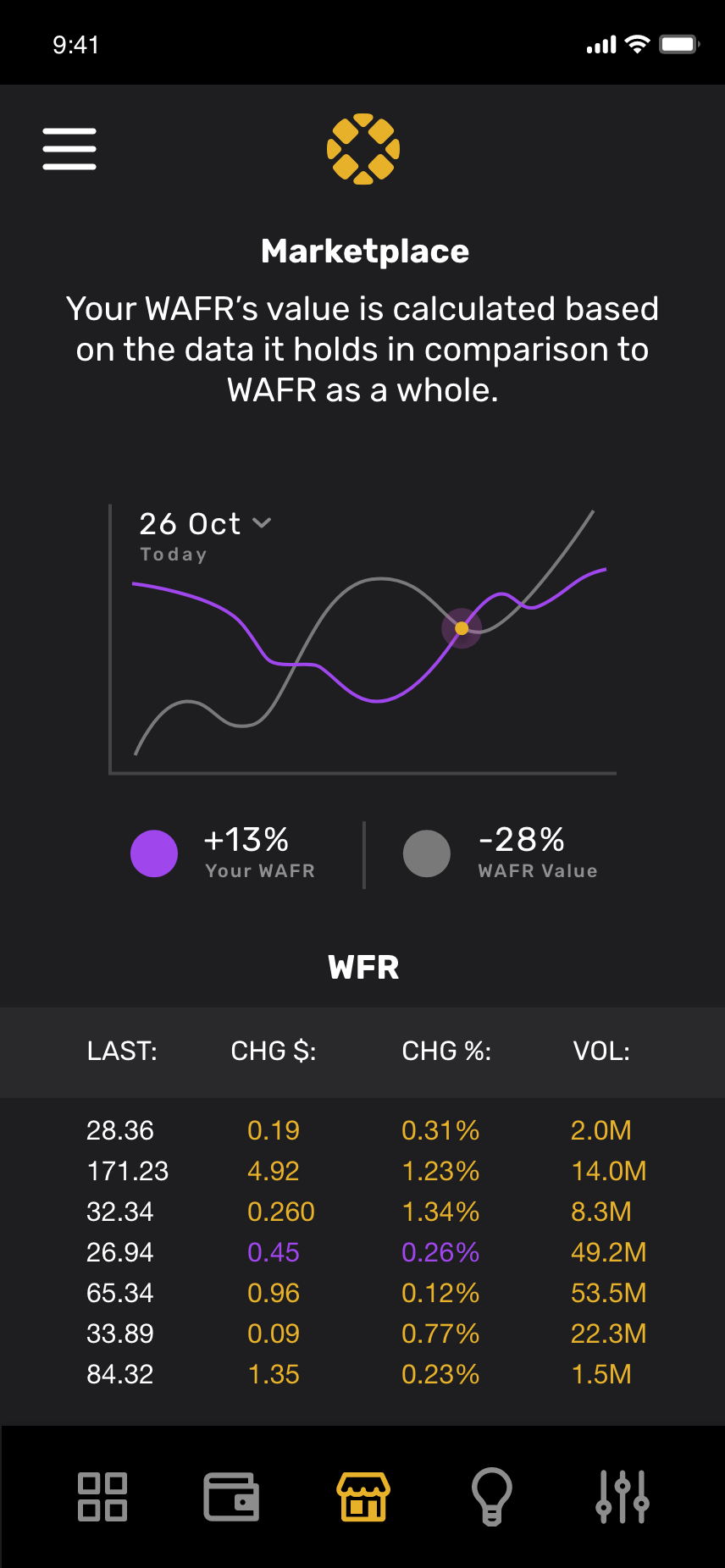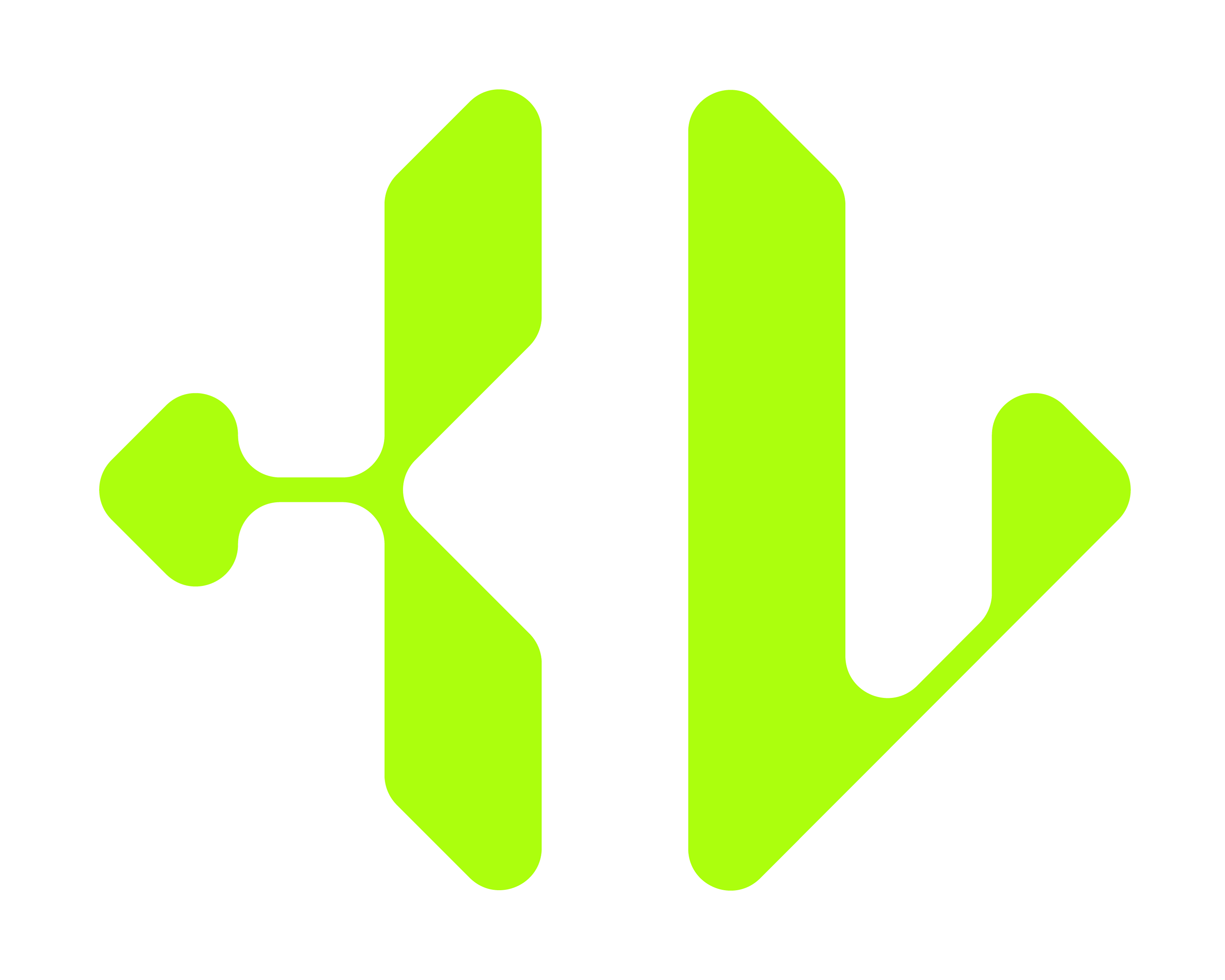WAFR is a decentralized application that stores peoples’ data and gives them the control to decide who to sell their data to. Consumers get paid and brands get reliable first party data. Our team created WAFR as an concept entry for a RAPP WEB3 Hackathon Project. With cookies coming to an end many brands aren't able to sell or use consumer data as easily, which is great for consumer, but not so much for companies. WAFR is the solution, bringing power and money to the consumers, while providing brands the data they need to grow. Together our team brainstormed, built wireframes, and designed out a working prototype within the span of a week.
TEAM:
+ Kenny Vuong + Unique Michael + Georgie Parker + Nic Climer + Bran Castelo
+ Kenny Vuong + Unique Michael + Georgie Parker + Nic Climer + Bran Castelo
CLICK ON THE PROTOTYPE TO NAVIGATE THROUGH THE WAFR APP. IF YOU NEED ASSISTANCE, CLICK ANYWHERE ON THE APP TO REVEAL HIGHLIGHTED AREAS THAT YOU CAN CLICK TO MOVE ON.
How does it work?
Each person gets a WAFR that acts as their encrypted token on the blockchain, building value over time. WAFR stores encryption keys and simplifies distribution, helping consumers overcome size limitations on the blockchain. After a person’s data sources are connected to WAFR their profile is then connected to the great WAFR—a marketplace that gives brands the power to access groups of WAFRs and make offers.
Each person gets a WAFR that acts as their encrypted token on the blockchain, building value over time. WAFR stores encryption keys and simplifies distribution, helping consumers overcome size limitations on the blockchain. After a person’s data sources are connected to WAFR their profile is then connected to the great WAFR—a marketplace that gives brands the power to access groups of WAFRs and make offers.
Why?
For decades data brokers and companies have profited off people by selling their data behind their back. Fortunately, Web 3 offers protection. On the other hand, brands will lose access to third party cookies. Our intent with WAFR was to give people the power to own their data and decide how much of it they are willing to sell—creating the first application to build trust between people and the brands they love.
For decades data brokers and companies have profited off people by selling their data behind their back. Fortunately, Web 3 offers protection. On the other hand, brands will lose access to third party cookies. Our intent with WAFR was to give people the power to own their data and decide how much of it they are willing to sell—creating the first application to build trust between people and the brands they love.
Who needs cookies when you have WAFR?
WIREFRAMES & PROTOTYPE PATHING:
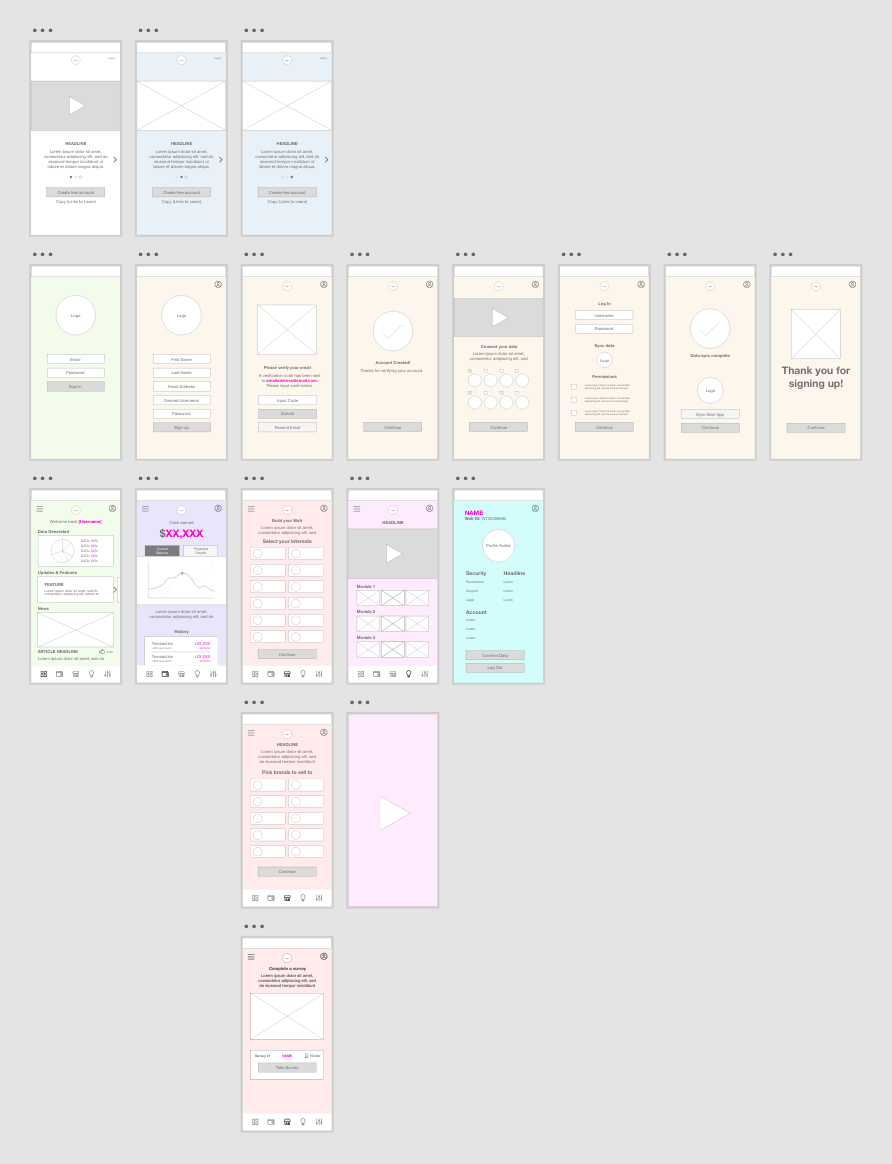

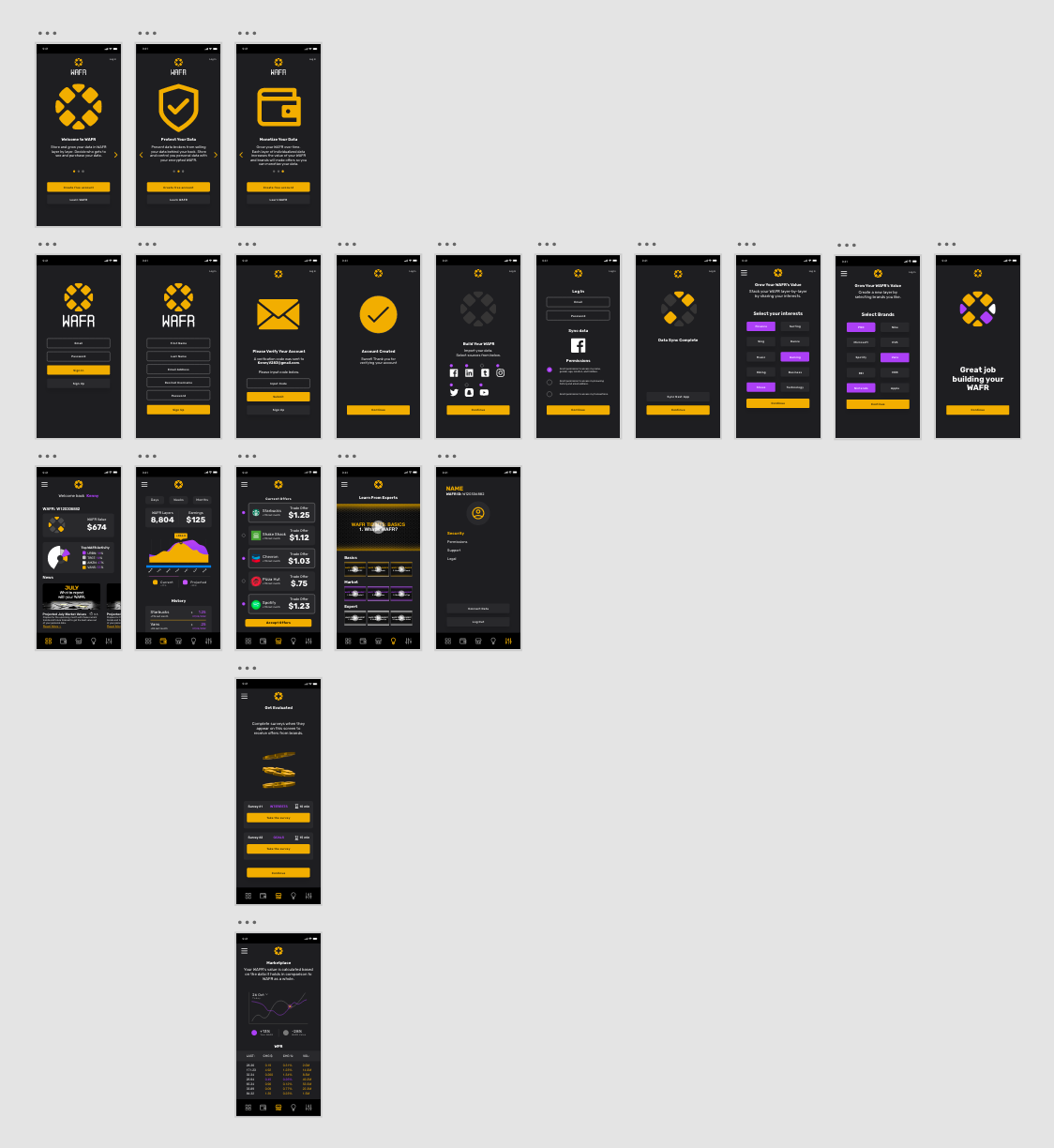

KEY PROJECT FRAMES:
